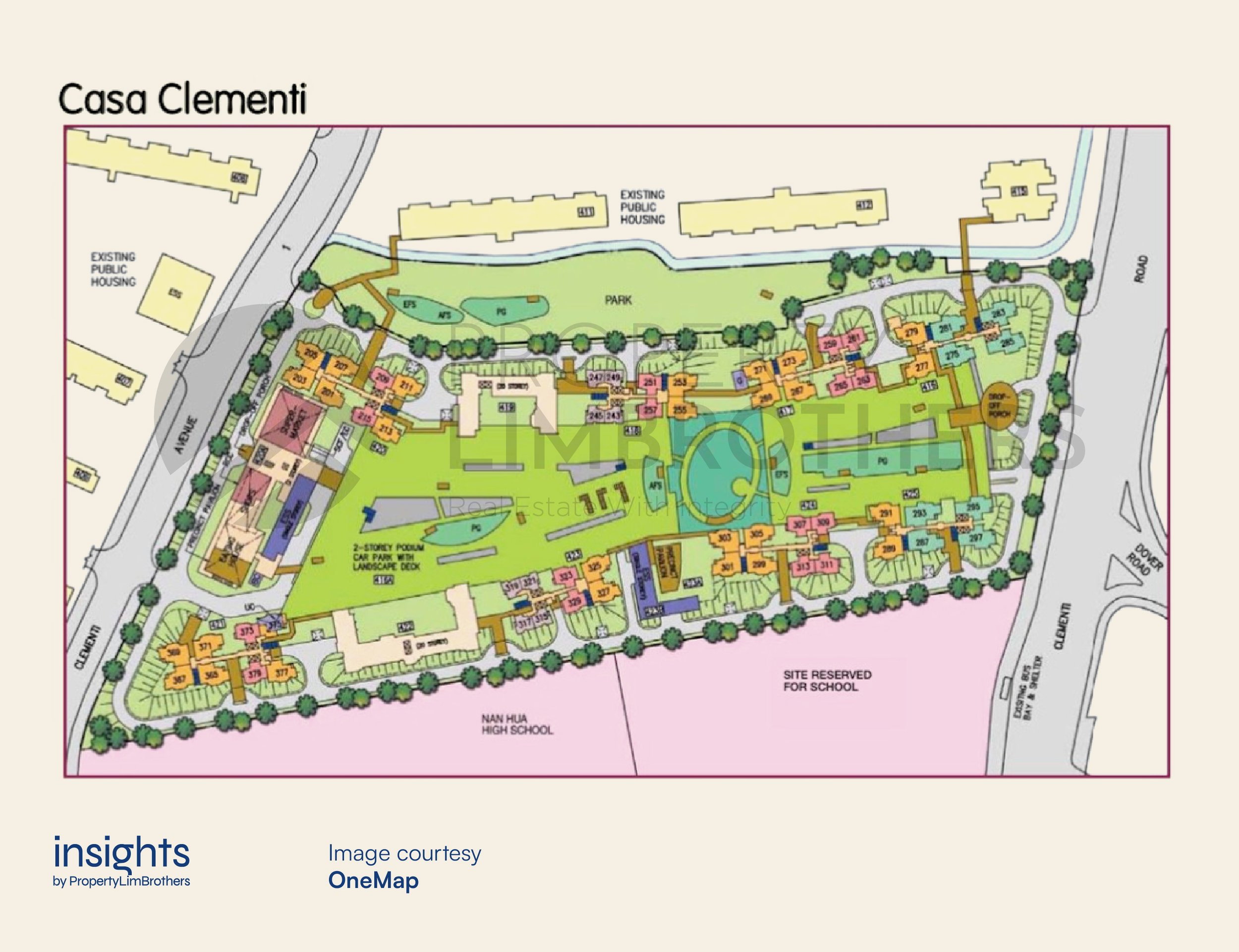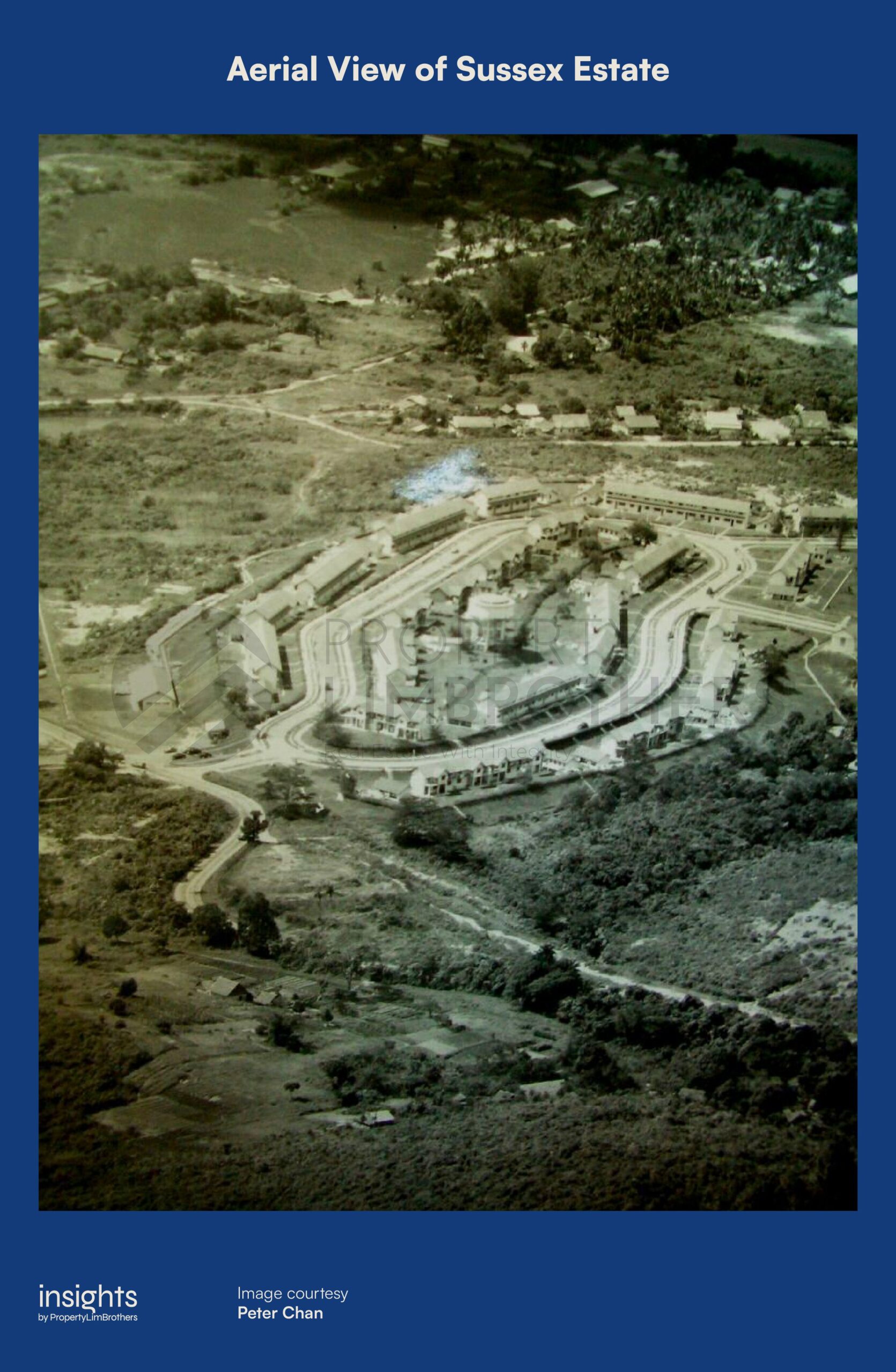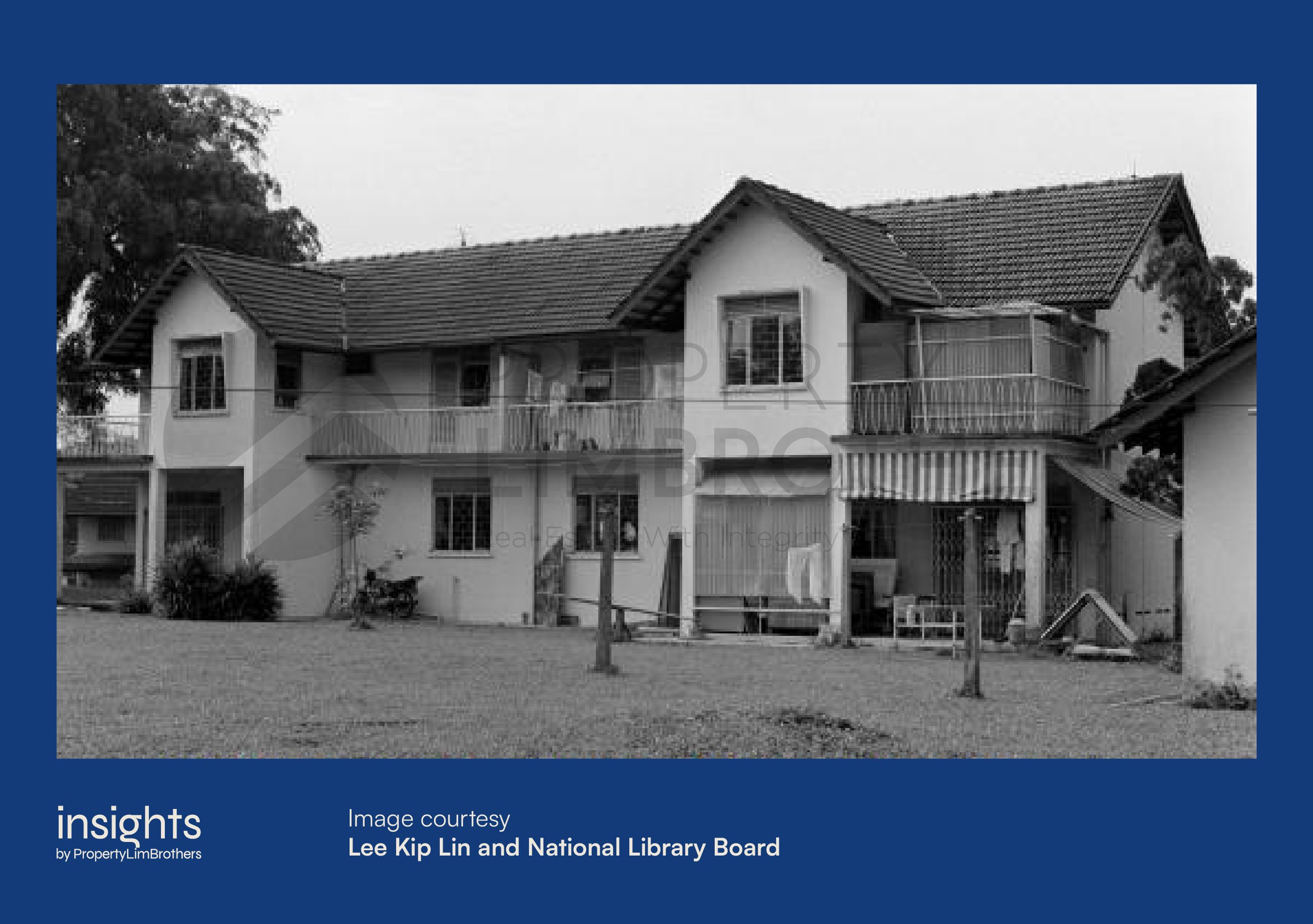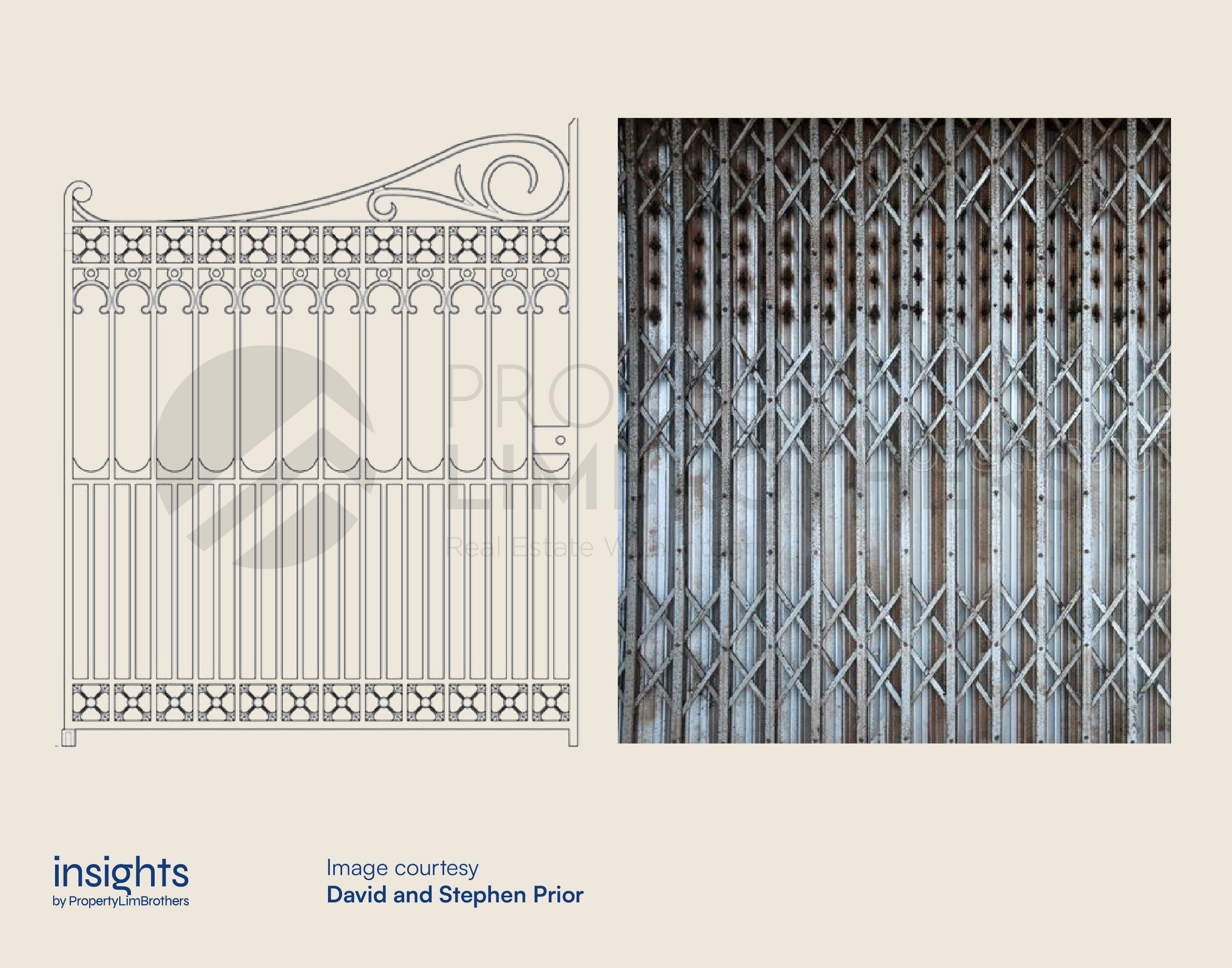
It is not unheard of for streets and areas of Singapore to be named after some random man (or woman) in history. Clementi was no anomaly. The residential town adopted Sir Cecil Clementi Smith’s name, and although you may not have heard of him, you may have been to the other streets named after him too – Cecil Street or Smith Street.
This famed man was the Governor of the Straits Settlement from 1887 to 1893, and tributing these areas in his name was not without reason. He was renowned for taming Chinese secret societies during the late-19th century, and endorsing scholarships to promote education in Singapore.
However, the ‘English-ness’ referenced in the article’s title is not about the accomplished gentleman; instead, we will be revisiting the foggy memories of Sussex Estate.
This piece of land in Clementi is not to be confused with Sussex County of England. Although they both share humidity and an abundance of sunshine, Sussex Estate was a marshland (think of Shrek’s swamp) that was demolished in 1997 and replaced with Casa Clementi in 2013. This article will dive into what Clementi Avenue 1 stood for (or on) and reminisce the duality of Clementi as a muddy village and a garden abode.
The Garden Abode of the Present

One glance at the amount of green sitting on the site plan of Casa Clementi, and you will know why we call this estate a “garden abode”. Built in 2013, Casa Clementi is a nine years old HDB estate. It boasts a Structuralism-styled architecture with plenty of nature weaved in to soften the boxy look. Skirting the estate in the north is a quaint park, and smack in the middle of it all is a large roof garden. In fact, the latter alone occupies 15,460 sqm or 27.3% of the site. It was no coincidence Casa Clementi won the Singapore Landscape Architecture Awards in 2013.
Like other newer HDB development, Casa Clementi was structurally designed to infuse a sense of belonging to the residents and instil an identity to the town. For instance, HDB estates nowadays have more shared spaces such as playgrounds and open courts to encourage neighbour interaction.
Furthermore, in accordance with the Clementi Town Plan, Casa Clementi is situated a stone’s throw away from many essentials, from markets to clinics. The Town Plan is a HDB initiative to develop Clementi into the eighth new town, more specifically, as a self-sufficient area with plenty of facilities to satisfy the residents’ diverse needs.

One amenity Casa Clementi has in abundance is schools, making this residence the perfect abode for those intending to raise a family. All your children’s educational concerns are answered with the location. In fact, parents will be so spoilt for choices in this area. From primary schools to universities, Clementi Avenue 1 has it all.
Unfortunately, the same cannot be said for the residents living on this same plot of land seven decades ago. Those living in Sussex Estate were not as privileged to enjoy the infrastructures of Clementi New Town, from the plethora of schools to eateries right at your doorsteps. Most strikingly, while Casa Clementi resembles a garden heartland today, Sussex Estate was a swampy abyss.
The Muddy Plains of Before

Demolished in 1997, Sussex Estate used to occupy the land where Casa Clementi stands today. Except, back in the mid-20th century it was not as green and was casa to a different group of people. Multiple 2-storey terrace houses were developed by Singapore Improvement Trust (predecessor of HDB)) in the mid-1950s to house the families of British senior non-commissioned officers. These military personnel were likely stationed at nearby military camps, like Colombo Camp (another establishment which no longer exists).


On the other hand, architectural styles in the 1950s, including those used on Sussex Estate, started to differentiate from the appearance favoured by the British and resembled what we see at Casa Clementi today. When Singapore transitioned from a British colony to an independent state, the architecture style simultaneously accommodated this shift. Buildings in the 1950s were more minimalistic, observing the Modernist style as compared to Neoclassical or Renaissance seen in traditional colonial buildings (like the Fullerton Hotel or National Museum of Singapore).
Sussex Estate likewise adopted the simpler ways of the International Style, which became increasingly prominent in public housing during the same period. Built in rectilinear forms with a plainly decorated exterior, this estate definitely created a stark contrast next to the exaggerated Tudorbethan style seen on Black and White bungalows.
Fading from the colonial style, Sussex Estate also embraced some Chinese architectural motifs. If you look closely at the window grilles, you will see a lattice pattern. This particular design takes on the uncomplicated planar pattern of miracles which are similar to the “back pattern” often observed in Chinese frames. Like the term “back” connotes, the window pattern symbolises a safe return home, longevity and auspiciousness for the homeowners in Chinese culture.

However, this does not mean the houses do not have an utter reminiscence of colonial influence. Colonial elements, such as the veranda-styled roof, continue to linger in terrace houses even outside of Sussex Estate. Similarly, Victorian-inspired gates were also used for the folding doors at the main entrance. However, as seen in the photographs, the gates do not have the intricate patterns and swirls used in the 1800s Victorian gates and instead spot the no-frill criss cross design to complement the minimalist theme of the architecture (aka scissor gates).

Making Way for Clementi New Town
In 1975, the whole area of Clementi went through a major redevelopment under the Clementi New Town plan, Sussex Estate was the only pre-development feature temporarily spared. Meaning, Colombo Camp was not as fortunate… The once training ground for the Singapore Guard Regiment was thus demolished to embrace the visions of a more integrated town.
Along with the land, over 800 villagers from surrounding kampungs were uprooted and relocated to HDB flats to make space for more high-rise housing. However, before embarking on the project, HDB had to take care of the swampy landscapes of Clementi. Earth from the town’s northern hills were used to level the sunken swamps and expand the usable areas for HDB’s infrastructures. Clearing the swamp was a sanguine outcome (besides the increase in housing), as the mossy waters had been known to host unwelcome guests…

See You Never Crocodile
You’ve heard the saying “see you later, alligator” or “after a while, crocodile”, but for the residents of Sussex Estate, they don’t get a choice. Crocodiles were de trop guests often sighted in the many swamps of the estate.
One Noordin was even bitten by a croc lurking in the Bidor River at Sussex Estate while he was bathing. The Teluk Anson Jungle Squad member was with his four mates in the four feet deep waters when a crocodile snagged both his hands and dragged him away. Thankfully with the power of friendship, Noordin was rescued.
However, that did not save Noordin’s heart of vengeance, as he returned to the same spot to spray the waters with Bren gunfire (a type of machine gun). It did not kill any crocodiles, which fuelled him to hire a pawang (a shaman) to annihilate the dangerous creature. Sounds like vengence is even more murderous.
Changes to Sussex Estate
Besides clearing the mossy water, HDB also obtained approval from the Public Utilities Board (PUB) to manage the clean water within Sussex Estate. Instead of a bulk water meter, which required all houses to pay a costly flat rate of $40 a month. PUB installed a private water meter for each household to measure individual water usage and charge accordingly. This new system promoted water conservation, a pressing issue then (and now) when the government was searching for more usable, clean water sources.
Remembering Sussex Estate
But the largest change to Sussex Estate remains its existence itself, as it was eventually demolished in 1997. Unfortunately, further development for Clementi New Town did not pardon this quaint village, but in its place stands Casa Clementi. Housing a different group of residents who may never know and hopefully never have to deal with the swampy conditions again.
Clementi Avenue 1 has seen many changes since Sussex Estate. For the most part, they are for the better. Gone are the muddy days, as residents of Casa Clementi get to enjoy a floral haven from their windows and good food at their doorstep. Yet, the ghostly photographs of the 2-storey terraces remind us of the fading memories of Sussex Estate and the melancholic progress of Clementi.
We hope this article has relived some of these valuable moments. If the homes at Clementi Avenue 1 appeal to you, feel free to reach out to us. Till our next trip down memory lane~








